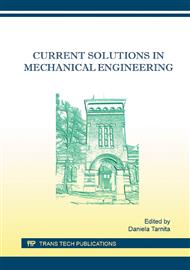[1]
A.M. Ashraful, H.H. Masjuki, et al. Production and comparison of fuel properties, engine performance, and emission characteristics of biodiesel from various non-edible vegetable oils a review, in Energy Conversion and Management 80 (2014).
DOI: 10.1016/j.enconman.2014.01.037
Google Scholar
[2]
A. Singer, O. Schröder, et al., Aging studies of biodiesel and hydrotreated vegetable oil and their testing as neat fuel and blends for exhaust emissions in heavy-duty engines and passenger cars, published in Fuel 153 (2015) p.595–603.
DOI: 10.1016/j.fuel.2015.03.050
Google Scholar
[3]
EurArctiv, Die Klimapolitik der EU. www. euractiv. com/de/nachhaltigeentwicklung/ klimapolitik-eu/article-155363, Published 06. December (2007).
Google Scholar
[4]
Ozer Can, Combustion characteristics, performance and exhaust emissions of a diesel fueled with a waste cooking oil biodiesel mixture, in Energy Conversion and Management 87 (2014) p.676–686.
DOI: 10.1016/j.enconman.2014.07.066
Google Scholar
[5]
S.M. Palash, M.A. Kalam, et al., Impacts of NOx reducing antioxidant additive on performance and emissions of a multi-cylinder diesel engine fueled with Jatropha biodiesel blends, in Energy Conversion and Management, 77 (2014), p.577–585.
DOI: 10.1016/j.enconman.2013.10.016
Google Scholar
[6]
H.C. Ong, A.S. Silitonga, et al., Production and comparative fuel properties of biodiesel from non-edible oils: Jatropha curcas, Ceiba pentandra and Sterculia foetida, in Energy Conversion and Management, 73 (2013) p.245–255.
DOI: 10.1016/j.enconman.2013.04.011
Google Scholar
[7]
S.M. Palash, M.A. Kalam, et al. Impacts of biodiesel combustion on NOx emissions and their reduction approaches, in Renew Sust Energy Rev 23 (2013) p.473–90.
DOI: 10.1016/j.rser.2013.03.003
Google Scholar
[8]
Cheolsoo Lim, Jongtae Lee, Jihyung Hong, Changkeun Song, Jinseok Han, Jun-Seok Chaa, Evaluation of regulated and unregulated emissions from a diesel powered vehicle fueled with diesel/biodiesel blends in Korea, in Energy, 77, (2014) pp.533-541.
DOI: 10.1016/j.energy.2014.09.040
Google Scholar
[9]
Y. Di, et al. Experimental investigation on regulated and unregulated emissions of a diesel engine fueled with ultra-low sulfur diesel fuel blended with biodiesel from waste cooking oil, in Sci Total Environ 407, (2009) pp.835-846.
DOI: 10.1016/j.scitotenv.2008.09.023
Google Scholar
[10]
Bhupendra Singh Chauhan, et al., A study on the performance and emission of a diesel engine fueled with Karanja biodiesel and its blends, in Energy, 56 (2013) pp.1-7.
DOI: 10.1016/j.energy.2013.03.083
Google Scholar
[11]
D. Tutunea, The use of unconventional fuels in internal combustion engines (in Romanian), Phd thesis, Craiova, (2009).
Google Scholar


